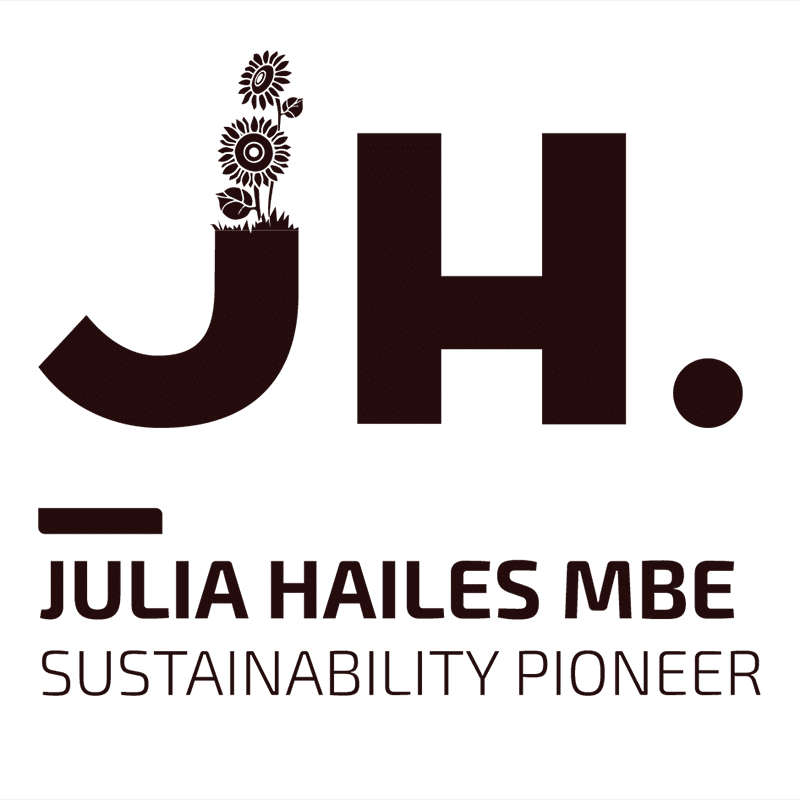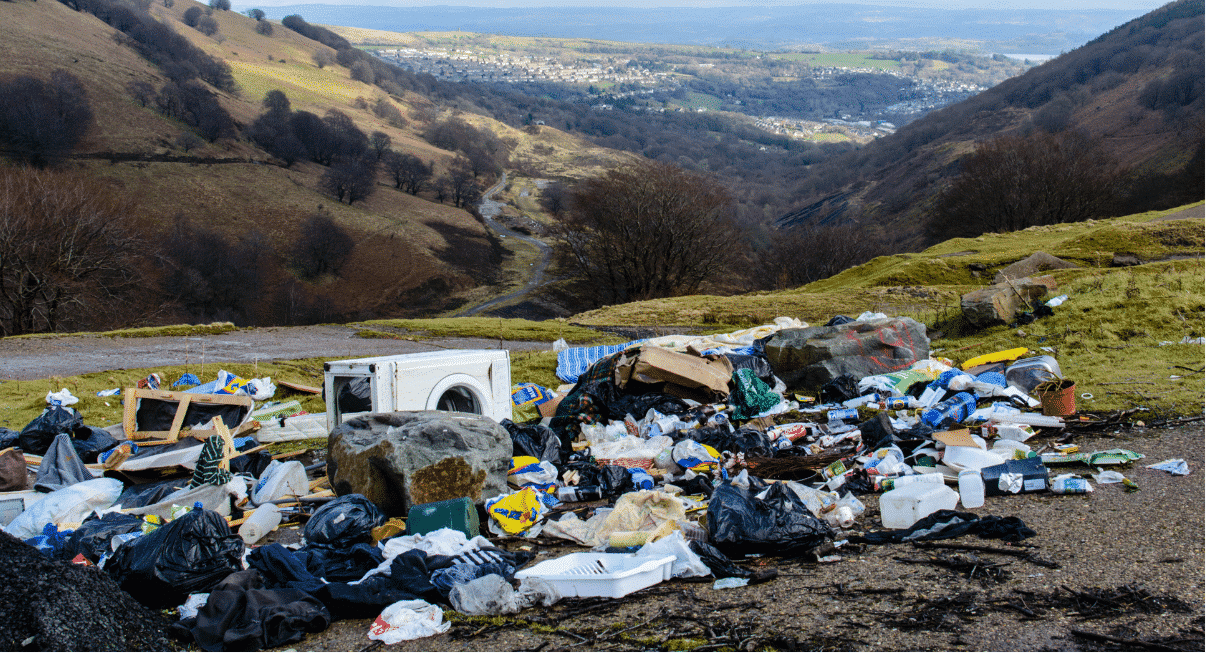No. I don’t think it is – at least not all of it.
Mid 2021 the EU is planning to introduce the Single-Use Plastics Directive. The key objective appears to be moving business and consumers away from single-use plastics and towards re-usable solutions.
On the surface of it, this sounds like a good environmental move. After all, using a container multiple times must be better than using it only once and chucking it away. But, as always the devil is in the detail and the reality is more complex than it might seem to be.
First, we have to consider why the directive focuses on single-use plastics rather than single-use of other materials. The main concern about plastics is that they’re not biodegradable, which makes them particularly problematic if they end up in the sea or littered around the countryside.
Does this make paper cups, wooden cutlery or aluminium cans better options? Not necessarily. We don’t want to design products for littering. It makes much more sense to prevent this from happening, whatever material is used. And, perhaps surprisingly, if waste ends up in a landfill site, it would actually be better if it’s not biodegradable because it wouldn’t be releasing greenhouse gases – instead, they would be locked away.

Another really key issue is that plastic is very often the most energy-efficient solution and therefore better in the climate change battle and our global aspiration towards net-zero carbon emissions. And, in relation to food packaging, plastic can be the best solution for preserving food longer and reducing food waste. Given that wasted food is responsible for about 8-10% of greenhouse gas emissions, this is significant.
Now, what about reusable packaging and products? Instinctively, we all like the idea of re-using products as many times as possible. Sometimes this makes a lot of sense, however there are many scenarios where it really doesn’t and pretending that this is the only environmental solution can be damaging.
For example, let’s look at how re-usable cups stack up. Not surprisingly, they will use more energy to make – metal ones are particularly energy hungry – so one key factor is how often they are used and what resources are used to reclaim them and clean them. Surprisingly, even in festival situations, the number of times these cups are re-used can be quite limited, as people either break them or remove them as souvenirs. And, I was quite shocked to discover that some festivals actually export dirty cups to be cleaned overseas, before importing them back to be used again.
There are other scenarios where it’s very difficult to see how a re-usable cups and containers would work at all, for example when products are sold to people on the move or even even through supermarkets. A horses for courses approach has to be the best solution, with both re-usable and single-use products depending on which has least impact, in a particular situation. Both have their place.
At this point, I should point out that I’m fully supportive of the SUP Directive’s mission to encourage ‘suitable alternatives’ to cotton bud sticks, beverage stirrers, straws and the like. In fact, I really struggle to see why straws and stirrers are so widely used, whatever the material they’re made from. And, what about disposable paper napkins, which are used by the mountain load, very often being discarded without going anywhere near someones hands and face!
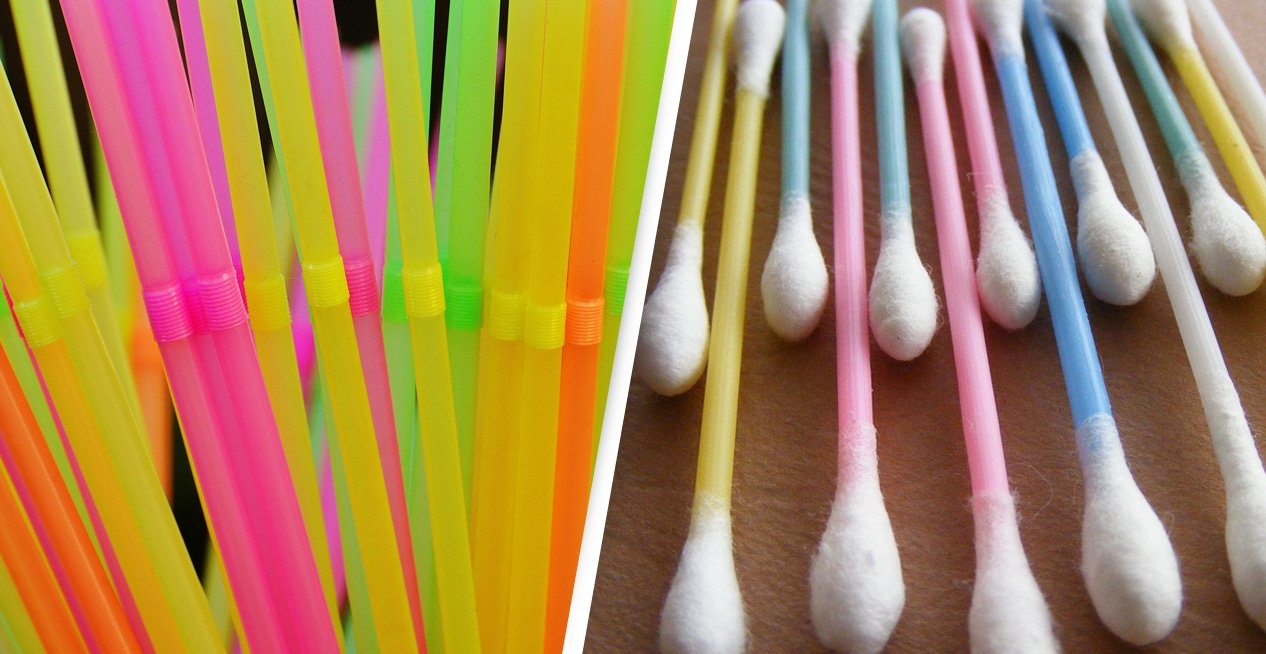
However, one of the most maddening things about the proposed Directive is that it fails to take account of whether a plastic product is made from 100% recycled material or indeed if it is recycled after use. Clearly, encouraging a closed-loop approach to packaging would have significant environmental benefits. In fact, the main concerns about plastics being non-biodegradable and littering would be eliminated, if it was made from recycled materials and then recycled again after use.
A key requirement of the proposed Single-Use Plastics Directive appears to be that some product types should be labelled or marked as plastic, with a sort of cigarette-style warning about how bad this is for the environment. There are two main ways of achieving this. First, all the products could be ink-printed with this message. However, currently, ink-printing on plastics is one of the key obstacles to recycling. As a result of this, there are literally thousands of tonnes of PET plastic that would be ideal for recycling, which end up being discarded because of printing contamination.
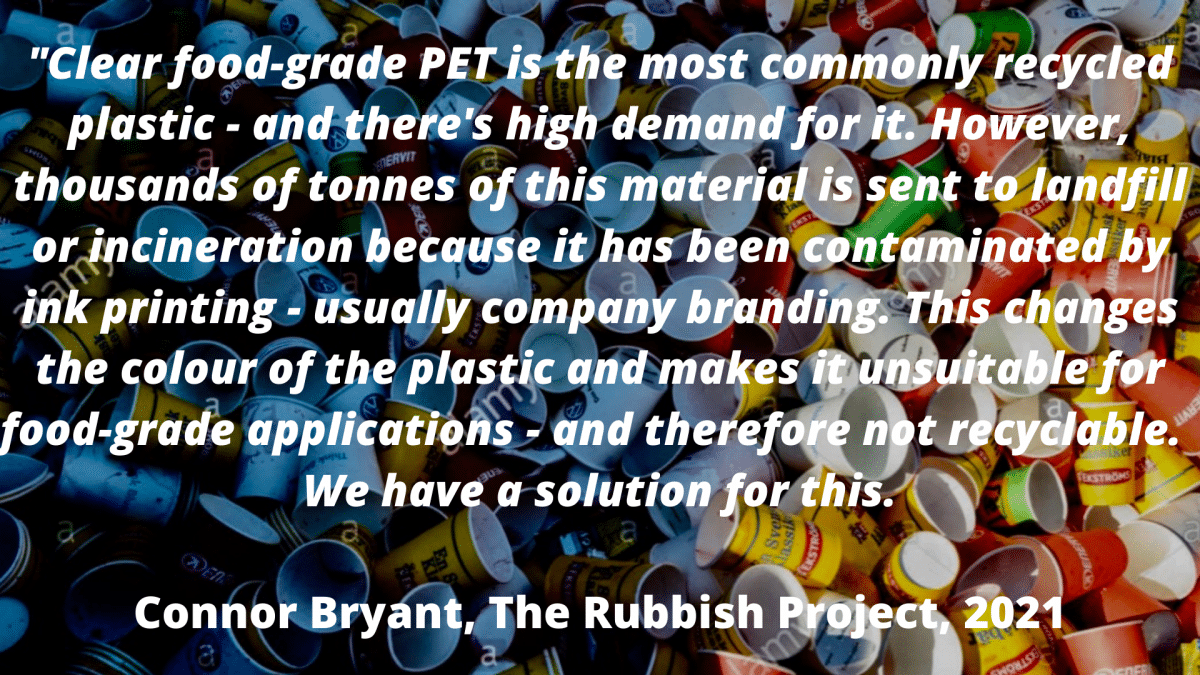
The other way of marking products with the warning label is to emboss them. This entails creating a mould with the message on it. And a different mould would be needed for every single product line – even different sized cups. A further requirement is that the labels need to be in the right language for wherever they will be sold. Given that each mould costs thousands of pounds, the cost for this measure would run into many millions.
My view is that politicians need to be careful about simply pandering to anti-plastic public opinion. They need to pay more attention to the science, review the full life-cycle impacts of their policies and most of all make sure that they truly benefit the environment.
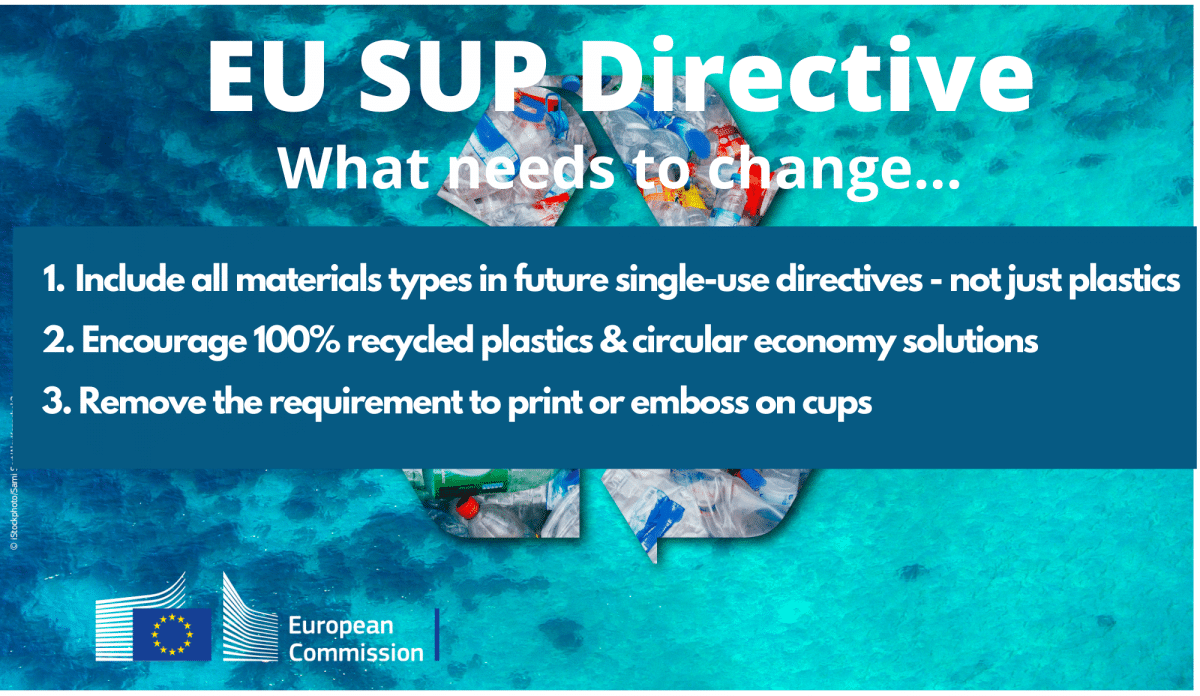
What should they be doing then? Yes, we want less waste. Yes, we want to use less energy. No, we don’t want litter on land or sea. The solution, therefore, has to be to design and support circular economy systems. Furthermore, if the measures they take cost a huge amount of money, I can’t help thinking that there are so many ways in which it could be better spent. For example, increasing recycling, reducing carbon footprints and avoiding littering – or indeed encouraging consumers towards positive behaviour.
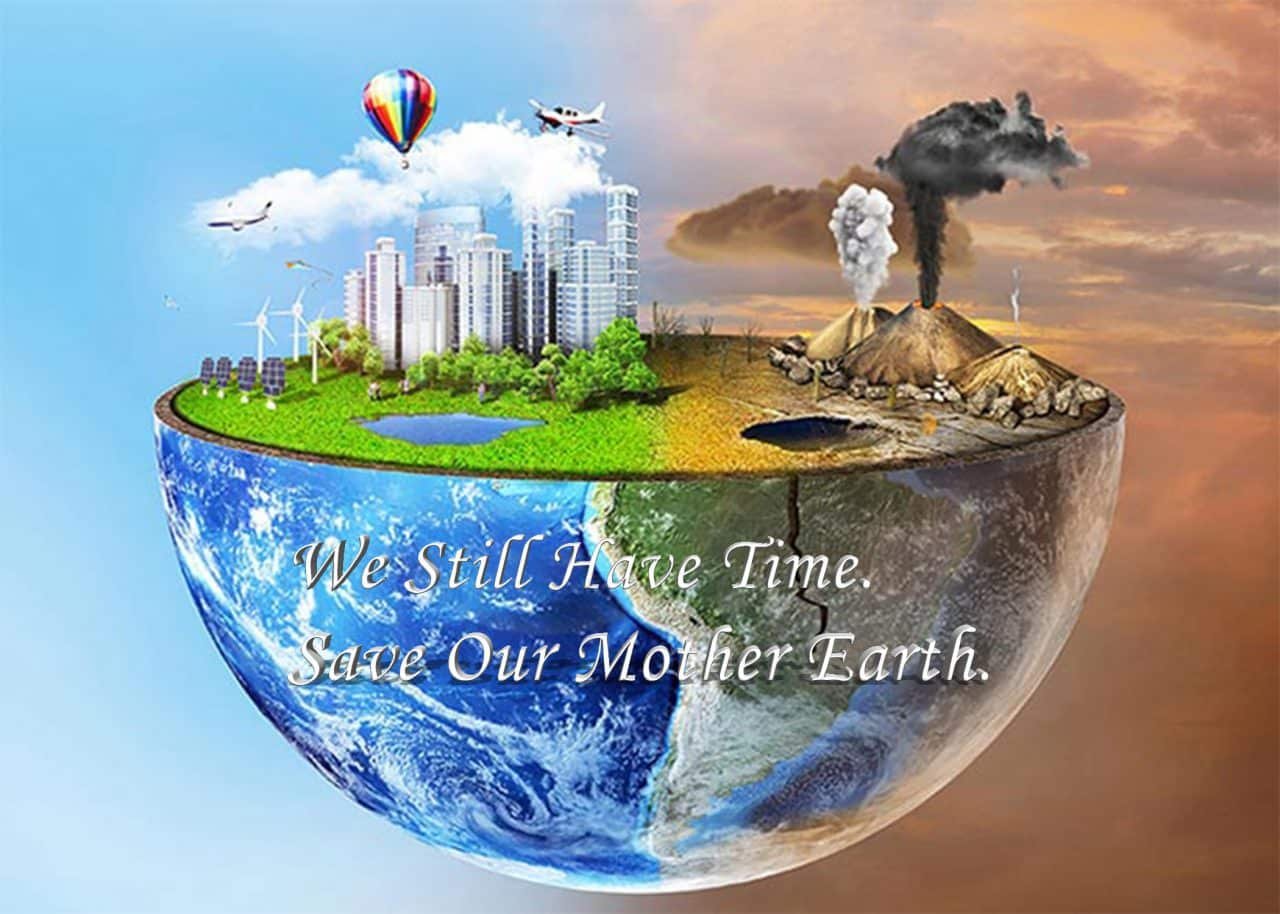
Going back to cups. The Rubbish Project is working with Huhtamaki, a global packaging producer, to create cups from recycled materials, to collect them after use and to recycle them again – either back into cups, or into other products. This initiative could be hampered by some parts of the EU Single-Use Plastic Directive, rather than encouraged. How mad is that?
I am a Director of Rubbish Ideas, who are partners in the Rubbish Project, and fully support their circular economy initiatives. As an environmentalist, I certainly wouldn’t be supporting it, if I wasn’t convinced that it was better for the environment than any alternatives. Surely, that should be the top priority in any measures taken…. The EU should re-think and revise their legislation!

